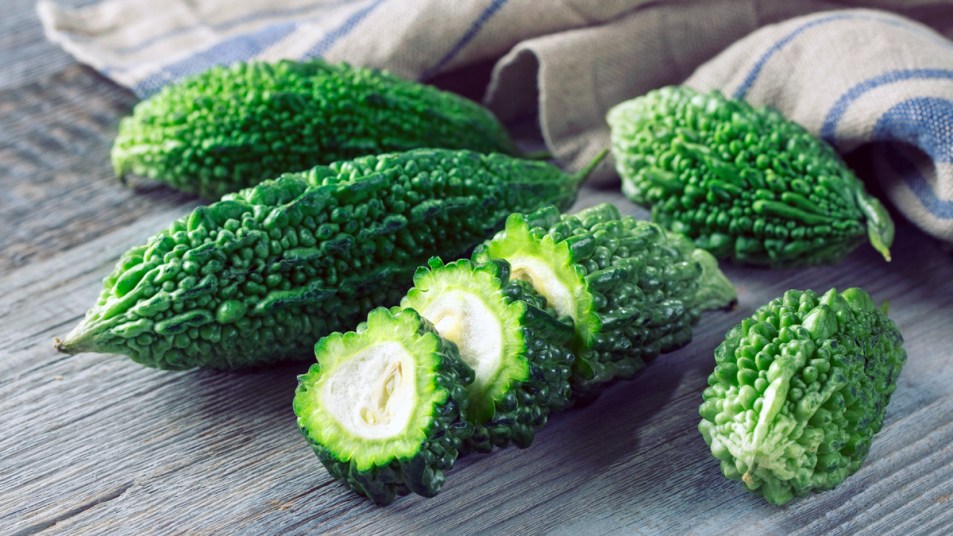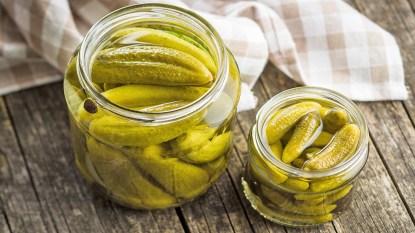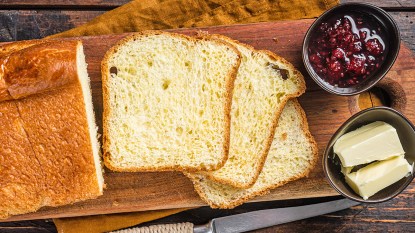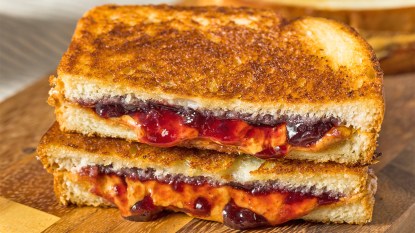Balance Blood Sugar, Ward Off Cancer, and Melt Belly Fat With This Anti-Aging Superfood

Bitter melon might sound (and look) a bit odd, but the fruit is packed with a ton of benefits you should know about — especially if you struggle with keeping your blood sugar in balance.
The bumpy green food is known by many names, including bitter gourd, karela, and goya. It grows in tropical and subtropical areas in South America, Asia, parts of Africa, and the Caribbean. However, you can still find it at health food shops or Asian markets across the globe.
The global diabetes community Diabetes.co.uk explains how anti-diabetic properties found in bitter melon make it ideal for anyone needing help with blood sugar control. The organization highlights the presence of substances like charatin, which has been shown to lower blood glucose levels, and polypeptide-p, which is an insulin-like compound.
They also mention how bitter melon contains a type of lectin that “reduces blood glucose concentrations by acting on peripheral tissues and suppressing appetite — similar to the effects of insulin in the brain.”
On top of the blood sugar benefits, the organization also cites a study from Saint Louis University which found extract from bitter melon was able to fight breast cancer cells and stop them from growing or spreading. According to the Memorial Sloan Kettering Cancer Center, that is based on a laboratory study and hasn’t been researched on human patients yet, but is still a promising discovery.
Want even more perks? No problem. Mascha Davis, RD, MPH, claims that the gourds are “packed with phytonutrients and vitamins, it’s a good source of vitamins C, A, and E. It also is rich in B vitamins, including folate and B2. Additionally, it has potassium, iron, magnesium, and zinc. If that’s not enough, it contains high levels of antioxidants.”
The high fiber and low calorie content in bitter melon (94 calories and two grams of fiber in a cup) is yet another perk, particularly if you’re struggling with stubborn belly fat. A 2012 study had participants take 4.8 grams of bitter melon extract every day and saw their waistlines “significantly decrease” after seven weeks.
So, how does it taste? Well, as the name suggests, bitter melon does indeed have a bitter flavor — but that’s not necessarily a bad thing. Jennifer McLagan, author of Bitter: A Taste of the World’s Most Dangerous Flavor (Buy on Amazon, $27.79), told Food Republic, “I love its bitterness so much that I find myself craving it.” She lists multiple ways of eating it, such as steaming or pan-frying like zucchini or stuffing it like squash. “It’s bitterness makes it a perfect match for chiles and fat.”
Food Republic also reached out to Tommy Lee, a chef and restaurant owner whose dad grew up in Hong Kong and passed down the best ways to prepare bitter melon. He recommends splitting the gourd in half, getting rid of the seeds, and letting it sit in some salt for 30 to 45 minutes before cooking. This helps eke out some of the bitterness and extra liquid, he says, adding that it’s most commonly used in stir-fries and soups.
Or you can skip eating it and try a supplement, like Nutricost Bitter Melon (Buy on Amazon, $15.95), instead. Either way, be sure to talk with your doctor before adding more bitter melon to your life, especially if you’re already being treated for diabetes.













